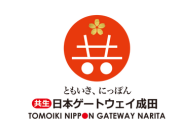The aim is simple and benign: sell more Merlot to visitors during their trip – and after they depart. With the oenotourism sector booming – and overall wine consumption paradoxically declining in mature markets – producers need every advantage they can muster. Or, as one owner put it: “On-site sales are good; continuing revenue once Mr and Mrs Smith are back home is even better.” Indeed, the importance of detailed information concerning people’s habits and preferences has never been more vital. It can mean the difference between success and a red-letter day.
“We compile visitor data from a variety of sources, including commissioning our own visitor profile and economic report every other year, Smith Travel Research, Cvent, and via our owned channels like our website and social media,” says Linsey Gallagher, president and CEO of Visit Napa Valley. “We are also in the process of implementing data provider Zartico. We analyse data from all of these sources to provide insights to our partners, which include lodging properties, wineries, restaurants, and experience partners in Napa Valley.”
The potential benefits to Napa wineries are numerous. For one thing, a more detailed understanding of visitor attributes will enable brands to personalise their direct-to-consumer channel, building loyalty by targeting specific preferences via email communication. “Our partners can take that information and better calibrate their offerings to meet the interests of those visitors, should they so choose,” explains Gallagher.
“For example, we created a blog post about 50 wineries offering tastings under $50. It quickly became one of the most highly trafficked pages on our website, and the list has now grown to over 70 wineries. When partners heard how popular the post was, they strove to highlight the offerings they created to meet the desires of that particular visitor.”
Viva the iPhone
Some of the data collection tools used by Visit Napa Valley have admittedly been around for some time now. Yet it is the ubiquitous smartphone, another well-established piece of tech, that is revolutionising how wineries obtain customer insights. In March, South Africa’s promotional body VinPro announced it was collaborating with Purple Presence Analytics to collect and collate visitor data: the process begins with counting the number of mobile devices in range of a Wi-Fi router. All that is required is for Millennials to never put their phones down for more than 2 seconds. Which, of course, is given.“Wi-Fi analytics record the information of visitors that connect to a guest Wi-Fi service via a branded splash page. A Customer Relationship Management (CRM) record for each guest is created when they connect and is updated each time they return. This is done by linking up one or more of their existing Wi-Fi routers to the Purple Wi-Fi platform,” says project lead Marisah Nieuwoudt.
She continues: “The system gives wineries the opportunity to build and reward loyalty based on the information captured about a visitor. In a more direct manner, the branded splash page can be used on the day of the visit by wineries to ask for feedback on the experience. This gives the winery the opportunity to intercept any negative experiences before the guest leaves, do a service recovery, and avoid a potentially negative review on TripAdvisor.”
“The system gives wineries the opportunity to build and reward loyalty based on the information captured”Radisson Blu, McDonalds, and Harrods are all fellow travellers in this field.
Thus, the market in data capture and analytics is booming; there are many firms competing for winery dollars in 2023. Christos Perakis, CEO of Zoottle, now has 24 wine clients in the US. His business provides free WiFi to winery guests in exchange for them agreeing to share their information for marketing purposes. This enables Zoottle to capture data including the visitor’s name, country, zip/postcode, gender, age, Instagram account, Facebook account, or Twitter account.
“Half of our clients have come on board in the past 12 months compared to five years for the previous dozen. We attribute much of this growth to Covid-reflex,” says Perakis. “Wineries learned their lesson regarding overly relying on tourism/tours and are now investing in solutions to allow them to expand their reach.”
The concept is straightforward enough: when a guest connects to the winery’s WiFi using a social media profile such as Facebook, they agree to share data from their public profile. This includes quantitative and qualitative data including birthday, gender, hometown, etc. In addition, when a person connects with their email account, a winery has the ability to ask for additional information in the login experience including Zip/postcode, age, etc. This data can then be analysed for commercial gain. Parakis earns his fee by engaging with wineries to understand their goals – distribution, sales, etc – to create an optimal plan for data utilisation.
“We segment the data into categories that make sense for wineries”“We segment the data into categories that make sense for wineries. That may be local and visitors; the latter, for example, would be broken down into which country the individual came from, and then that would be broken down into which region, city, etc. While still on site, we share surveys with guests, asking them about their experience, which wines they liked best, how things can be improved, etc,” he says.
“A guest that is visiting from Boston, for example, may state that they liked the Merlot. As a result, they will receive a coupon for a discounted bottle available from the distributor covering the state of Massachusetts. And, if the majority of Americans visiting the winery say that they like reds as opposed to whites, marketing in the US is adjusted to advertise reds as opposed to whites.”
The future of data capture
Data capture technology, coupled with a sophisticated engagement process, clearly has the potential to transform wine marketing on a global scale. But there is a caveat: Parakis emphasises that data collection on its own does not guarantee anything. “What encourages engagement and greater sales from tourism visitors after they return home is a well-rounded, well-thought-out loyalty scheme, which uses the data collected at the winery.” He also warns against making the data capture process cumbersome, which results in a large percentage of guests not completing the process. “Data collection needs to be as seamless and as frictionless as possible,” he advises.“Data collection needs to be as seamless and as frictionless as possible”When I started researching this piece, there was a reasonable expectation that ‘Old World’ winemakers would be more resistant to the idea of data capture; the bucolic splendour of Tuscany isn’t called ‘timeless’ for nothing. However, I’ve spoken to many producers who were intrigued by the idea, in addition to several early adopters. Feudi di San Gregorio, for example, uses the digital platform Sendinblue to target different consumer segments and build CRM campaigns around marketing occasions. “The winery is now using geolocated social advertising to target potential clients and drive traffic to the different winery venues (guest house, gourmet restaurant, winery, pop-up bar, etc),” says president Antonio Capaldo.
Meanwhile, the CIVB’s communications director Christophe Chateau is having talks with key properties across the region to investigate the possibility of emulating the project being trialled in South Africa. “Data collection in the field of wine tourism will be a key theme of tomorrow. Thanks to the data we collect with these tools, we get to know visitors better and thus adapt our offerings, both in terms of tourism and wine,” he says.
By 2033, one suspects that few wineries, European or otherwise, will be aloof to the advantages of big tech.
This article first appeared on our partner Wine-Searcher's website.

 English
English French
French
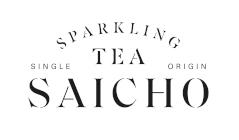
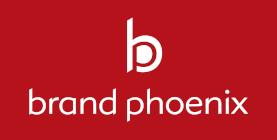
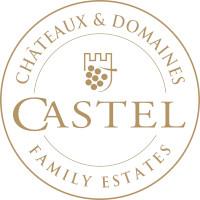
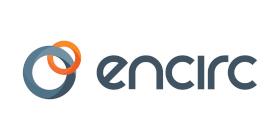
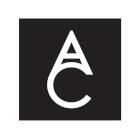
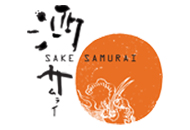
.png)
